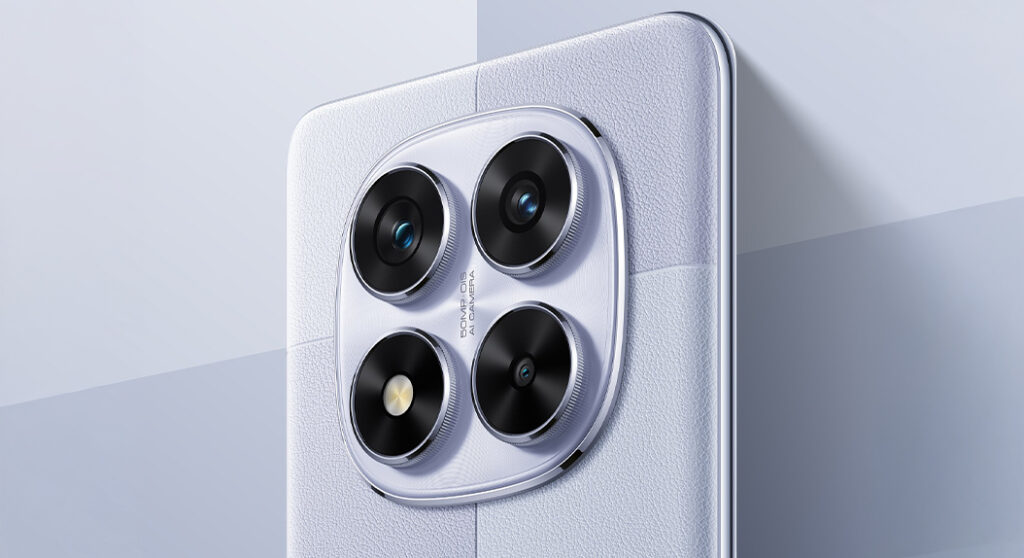On a high in the Indian tech landscape, Xiaomi has lined up a series of product launches and organizational changes. From the expected launch of the Redmi Note 14 series in the coming month to the arrival of the Redmi A4, as powered by Snapdragon 4S Gen 2, Xiaomi gets ready to give some solid launches in India. The flagship Xiaomi 15 will be coming with advanced features and the latest technology from Snapdragon in March 2025. The company is eyeing these launches to reclaim the top spot in the India market, pushing some exciting innovations downstream to its customer base.
Xiaomi’s Product Line-up to come in India: Overview
Redmi Note 14 Series – December 2024
The upcoming Redmi Note 14 series next month will, therefore, be a return to this dual-launch strategy that Xiaomi has usually adopted. Xiaomi started the trend of launching two generations in one year until it changed its policy in 2022 to only one generation per year. Of course, this move helps keep Xiaomi competitive in the Indian smartphone market, which demands newer models regularly.
Redmi A4 powered by the Snapdragon 4S Gen 2 – November 2024
Redmi A4 will be positioned in the ‘for-the-masses 5G’ category, powered by Qualcomm’s Snapdragon 4S Gen 2 chipset, manufactured for the Indian market. This entry-level 5G device is targeted to make next-generation connectivity more affordable for more users, hence aligning with Xiaomi’s commitment towards India-first manufacturing and product development. It received a decent reception in IMC during October and is supposed to be a blockbuster among budget-conscious consumers who want to make a switch to a 5G-enabled device.
Xiaomi 15 Series – March 2025
The Xiaomi 15 will reach India in March 2025 and is powered by the mighty Snapdragon 8 Elite chipset. Currently, this device is available in China, containing top-of-the-line performance, an advanced camera, and moving fluidly with Xiaomi’s new HyperOS.
It is to be noted that Xiaomi India hasn’t declared the launch of the Xiaomi 15 Pro. Still, the standard Xiaomi 15 is likely to pack in some flagship-level features that would meet the needs of high-end smartphone enthusiasts.
Leadership Transition and Strategic Vision of Xiaomi India
The upcoming exit of Muralikrishnan B, President, Xiaomi India, at the end of 2024, is about to bring a change in the India operations of Xiaomi. Muralikrishnan was important in leading Xiaomi through its regulatory challenges and rebuilding consumer trust. He ascribes his departure to academia in light of the fact that he would like to complete his PhD at the Indian School of Business. While he will transition into a role of strategic advisor, his exit is a big change for Xiaomi India.
Xiaomi India president Muralikrishnan B steps down to pursue executive doctorate at ISB
In August 2024, Sudhin Mathur joined Xiaomi as Chief Operating Officer to smoothen the transition. Coming with loads of experience from Lenovo, LG, and Sony Ericsson, Mathur is supposed to push forward the business and operations of Xiamoi. His acumen mixed with insight, along with strategic inputs by Anuj Sharma, its Chief Marketing Officer, will further help Xiaomi navigate India’s competitive market terrain.
Muralikrishnan optimistic about the future of Xiaomi in India, says, “The key elements that can make for a successful business looking ahead into the next 10 years are definitely there. *.
Success of Diwali Sales and Growing TV Market
This year, Xiaomi’s Diwali strategy clicked well, and the firm witnessed strong sales in different categories such as smartphones, 4K TVs, and wearables. Front-loading inventory helped the company to service the festive demand without stressing its supply chain, and hence, the brand had a good sales season. Most importantly, Xiaomi’s affordable 4K TVs, more so the ones in the 43-inch screen size, are in high demand. It ships a signal toward larger screens with high-quality resolution.
Its wearables, like the Redmi Watch and Mi Smart Band, were other strong runners within the series, driven by in-store sales during Dhanteras. In fact, the expanding TV and wearable lineup at Xiaomi is part of a larger plan to increase its emerging ecosystem and offer a line-up of connected devices for Indian consumers.
The Future of Xiaomi India: Premiumisation and Ecosystem Connectivity
Going forward, premiumisation and connected devices are two important focus areas for the company. The Xiaomi 15 series is expected to hit the Indian market in March 2025, which will play an important role in that plan. In collaboration with Leica, Xiaomi will work on bettering the camera technology in order to gain more shares in the premium sectors by offering superior imaging among other flagship features. Apart from smartphones, the company is expected to reinforce offerings in TV and wearables product categories to offer an integrated ecosystem for Indian consumers who seek affordable yet high-quality tech experiences. Led by the leadership team of Mathur and Sharma, Xiaomi will be expected to realize the vision of premiumisation through customer-centric innovation in India.
The new era had started for Xiaomi India with a string of upcoming product launches, changes in the leadership, and a strategic focus on premiumisation. From the imminent arrival of the Redmi Note 14 series and Redmi A4 to Xiaomi 15 in March 2025, Xiaomi can position itself well across different price segments for budget-conscious users and also for premium buyers. As Xiaomi cements its position in the Indian market, much like in the past, it will be committed to bringing more affordability, quality, and innovation to the fans’ doorsteps. The changes at the helm might bring fresh perspectives, and with Xiaomi’s product lineup in evolution, exciting options may be available for Indian consumers over the months to come.


 Emir Bardakçı
Emir Bardakçı


